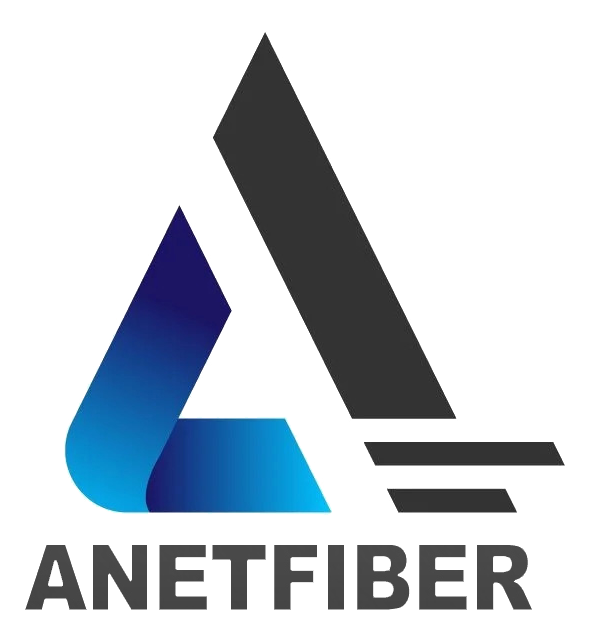The Future of FTTH Technology: Unveiling Symmetrical Gigabit Speeds

Understanding FTTH and Its Importance
Fiber to the Home (FTTH) is a revolutionary technology that brings high-speed internet directly to our homes. But what exactly is FTTH, and why does it matter for you and me?
What is FTTH?
Breaking Down the Basics
FTTH, as the name suggests, refers to the delivery of fiber-optic technology directly to residential homes. This means that instead of relying on traditional copper wires, data is transmitted using optical fibers made of glass or plastic. These fibers enable the transmission of large amounts of data at incredibly fast speeds.
Why It Matters for You and Me
The significance of FTTH becomes evident when we consider its impact on our daily lives. With symmetrical gigabit speeds, FTTH technology allows for seamless streaming, rapid downloads, and lag-free online gaming experiences. Moreover, it opens up opportunities for remote work, online education, and telemedicine, especially in today's digital age.
The Current State of FTTH
A Look at the Numbers
The adoption of FTTH has been steadily increasing across the globe. In fact, statistics show that fiber-optic connections are becoming more prevalent in urban and suburban areas. This expansion signifies a growing recognition of the importance of high-speed internet access in both residential and commercial settings.
Real-World Impact on Our Daily Lives
The real-world impact of FTTH can be seen in various aspects of our lives. From faster download speeds to improved video conferencing quality, FTTH has become an essential component of modern living. As we continue to rely on digital connectivity for work, entertainment, and communication, the role of FTTH in enhancing our daily experiences cannot be overstated.
The Future of FTTH Technology
As we look ahead to the future of FTTH technology, it's essential to consider the advancements that are paving the way for symmetrical gigabit speeds and the evolving trends in fiber to the home connectivity.
Advancements Leading to Symmetrical Gigabit Speeds
The Technical Breakthroughs
The journey towards symmetrical gigabit speeds has been marked by remarkable technical breakthroughs. Innovations in optical networking, such as Dense Wavelength Division Multiplexing (DWDM) and Coherent Optics, have significantly enhanced the capacity and efficiency of fiber-optic communication systems. These advancements have enabled network operators to deliver higher bandwidths and symmetrical upload and download speeds, revolutionizing the capabilities of FTTH infrastructure.
What Symmetrical Speeds Mean for Users
For users, symmetrical gigabit speeds translate into a transformative internet experience. With symmetrical connectivity, individuals can enjoy lightning-fast upload and download speeds, enabling seamless video conferencing, real-time cloud backups, and collaborative online activities. This level of speed parity empowers users with a more balanced and efficient internet usage experience, fostering productivity and innovation across various digital domains.
Fiber to the Home Future Trends
Predictions and Expectations
Looking into the future of fiber to the home connectivity unveils exciting predictions and expectations. As demand for high-speed internet continues to surge, experts anticipate a proliferation of FTTH deployments in both urban and rural areas. Moreover, ongoing research into advanced fiber-optic technologies promises even greater transmission capacities, laying the groundwork for ultra-fast broadband services that will redefine our digital interactions.
How These Trends Affect Us
The evolving trends in FTTH hold profound implications for how we live, work, and connect with one another. As FTTH becomes more widespread, communities will witness enhanced access to educational resources, telecommuting opportunities, telehealth services, and immersive digital entertainment experiences. Additionally, these trends are poised to bridge the digital divide by ensuring equitable access to high-speed internet across diverse socio-economic landscapes.
The Role of 5G Integration in FTTH
In the ever-evolving landscape of connectivity, the integration of 5G technology with Fiber to the Home (FTTH) is poised to redefine the way we experience high-speed internet. Understanding the fundamentals of 5G and its seamless connection to FTTH illuminates the potential for enhanced speed, reliability, and future possibilities.
Understanding 5G and Its Connection to FTTH
The Basics of 5G Technology
5G technology represents the next generation of mobile network connectivity, offering unprecedented speed, low latency, and massive device connectivity. Unlike its predecessors, 5G operates on higher frequency bands, enabling faster data transmission and supporting a multitude of devices simultaneously. This advanced wireless technology serves as a catalyst for transforming digital experiences across various sectors, from telecommunications to smart infrastructure.
How 5G Complements FTTH
The synergy between 5G and FTTH lies in their complementary strengths. While FTTH delivers ultra-fast and reliable broadband directly to homes through fiber-optic cables, 5G extends its reach by providing high-speed wireless connectivity to a wide array of devices. By integrating these technologies, users can benefit from a unified ecosystem where seamless indoor and outdoor coverage converges with high-capacity fixed broadband services. This convergence not only enhances user experiences but also paves the way for innovative applications that harness the power of both technologies.
The Benefits of 5G Integration
Enhanced Speed and Reliability
The integration of 5G with FTTH brings forth unparalleled speed and reliability in internet connectivity. With symmetrical gigabit speeds facilitated by FTTH technology and the exceptional performance capabilities of 5G networks, users can indulge in lightning-fast downloads, buffer-free streaming, and real-time interactive experiences. Furthermore, the low latency characteristic of 5G ensures responsive connections for gaming enthusiasts and supports latency-sensitive applications such as augmented reality (AR) and virtual reality (VR).
Future Possibilities with 5G and FTTH
The convergence of 5G with FTTH unlocks a realm of future possibilities that extend beyond conventional internet usage. From empowering smart cities with interconnected IoT devices to revolutionizing industrial automation through ultra-reliable low-latency communication (URLLC), this integration sets the stage for transformative advancements across industries. Moreover, it lays the foundation for ubiquitous connectivity that fosters innovation in areas such as autonomous vehicles, remote robotic surgeries, and immersive multimedia experiences.
Smart Home Applications Enabled by FTTH
The rise of smart homes signifies a transformative shift in residential living, where technology seamlessly integrates with everyday tasks and functions. But what exactly makes a home "smart," and how does high-speed internet play a pivotal role in enabling these advancements?
The Rise of Smart Homes
What Makes a Home "Smart"?
A smart home is characterized by the integration of interconnected devices and systems that automate and enhance various aspects of daily life. From intelligent thermostats and lighting controls to security cameras and voice-activated assistants, these technologies work together to create an efficient, convenient, and secure living environment for occupants. The foundation of a smart home lies in its ability to adapt to user preferences, anticipate needs, and optimize energy usage through data-driven automation.
The Role of High-Speed Internet
The seamless operation of smart home devices relies heavily on high-speed internet connectivity, particularly facilitated by FTTH technology. With symmetrical gigabit speeds provided by FTTH, smart devices can communicate instantaneously with each other and cloud-based services, ensuring real-time responsiveness and uninterrupted functionality. This level of connectivity empowers homeowners to remotely monitor their properties, control appliances, and access multimedia content with minimal latency or buffering.
Examples of Smart Home Applications
Everyday Uses in a FTTH-Enabled Home
In a FTTH-enabled smart home, the applications are diverse and impactful. Residents can enjoy hands-free control over lighting, temperature settings, and entertainment systems through voice commands or mobile apps. Security features such as video doorbells and motion sensors provide real-time alerts directly to smartphones or tablets. Additionally, remote access to surveillance cameras allows homeowners to monitor their property from anywhere with an internet connection.
The Future of Smart Home Innovation
As fiber-optic technology continues to evolve, the future holds promising advancements in smart home innovation. Enhanced bandwidth capabilities will enable more sophisticated IoT devices that cater to personalized preferences while maintaining robust security measures. Moreover, the integration of AI algorithms with smart home systems will further streamline automation processes, leading to greater energy efficiency and tailored user experiences.


